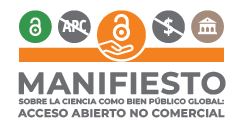The work of girls, boys and adolescents in Venezuela from the approach of the International Labor Organization
DOI:
https://doi.org/10.5281/zenodo.12627757Keywords:
Child labor, Forced labor, OIT, VenezuelaAbstract
The purpose of this paper is to analyze the compliance of the regulatory instruments that promote the abolition of child labor, based on the identification and characterization of the forms of child labor detected in the sector. To achieve these objectives we made an analysis of the national legal framewok and the international laws that regulate that regulate this activity. The research has a qualitative approach as we select four (04) kinds of informants, using the teachers, workers and students for this purpose. Their testimonies were collected directly from real events in real time. The study concludes that, in a sector of the Zamora Municipality located in Aragua State, various forms of child labor were detected, including some dangerous work, according to the International Conventions of the International Labor Organization (ILO) and the national legislations that regulates this matter.
Downloads
References
Blanco, F. (2009). Trabajo infantil en Venezuela.1997-2007. Roma. https://docplayer.es/22166825-Trabajo-infantil-en-venezuela-1998-2007.html. Consulta: 11/07/2018.
Hernández, R et al. (2010). Metodología de la Investigación. (5ta. edición) McGrawHill.
Constitución de la República Bolivariana de Venezuela. (2000). Gaceta Oficial Nº 5.453 con la Enmienda No 1 de fecha 15 de febrero de 2009.
Asamblea Nacional de la República Bolivariana de Venezuela. (10 de diciembre). Ley Orgánica para la Protección de Niños, Niñas y Adolescentes. Gaceta Oficial N G.O N° 5.859 Extraordinaria. (2015)
Organización Internacional del Trabajo (2006). Conferencia internacional del trabajo. (2006). Ginebra. https://www.ilo.org/public/spanish/standards/relm/ilc/ilc95/pdf/rep-i-b.pdf.
Organización Internacional del Trabajo (s.f). Alto al trabajo infantil. OIT. Ginebra. https://www.ilo.org/legacy/spanish/buenos-aires/trabajo-infantil/resource/docs/117_alto_ti_triptico.pdf.
Organización Internacional del Trabajo (1999). Recomendaciones N° 190 sobre las peores formas de trabajo infantil y acción inmediata para su eliminación. OIT. Ginebra. https://www.ilo.org/dyn/normlex/es/f?p=normlexpub:12100:0::no::p12100_ilo_code:r190.
Organización Internacional del Trabajo. (2008) Resolución sobre las estadísticas del trabajo infantil. Ginebra. https://www.ilo.org/wcmsp5/groups/public/---dgreports/---stat/documents/normativeinstrument/wcms_112462.pdf.
UNICEF (2009). No más trabajo infantil: una meta posible de alcanzar. Caracas. Estudio sobre educación y trabajo infantil en la República Bolivariana de Venezuela. 1ª Edición. https://www.unicef.org/venezuela/spanish/No_mas_trabajo_infantil_UNICEF.pdf
Published
How to Cite
Issue
Section
License
Copyright (c) 2024 Universidad Alonso de Ojeda

This work is licensed under a Creative Commons Attribution-NonCommercial-ShareAlike 4.0 International License.
All content of Ethos Journal will be free access, distributed under the Creative Commons license (BY-NC-SA).




